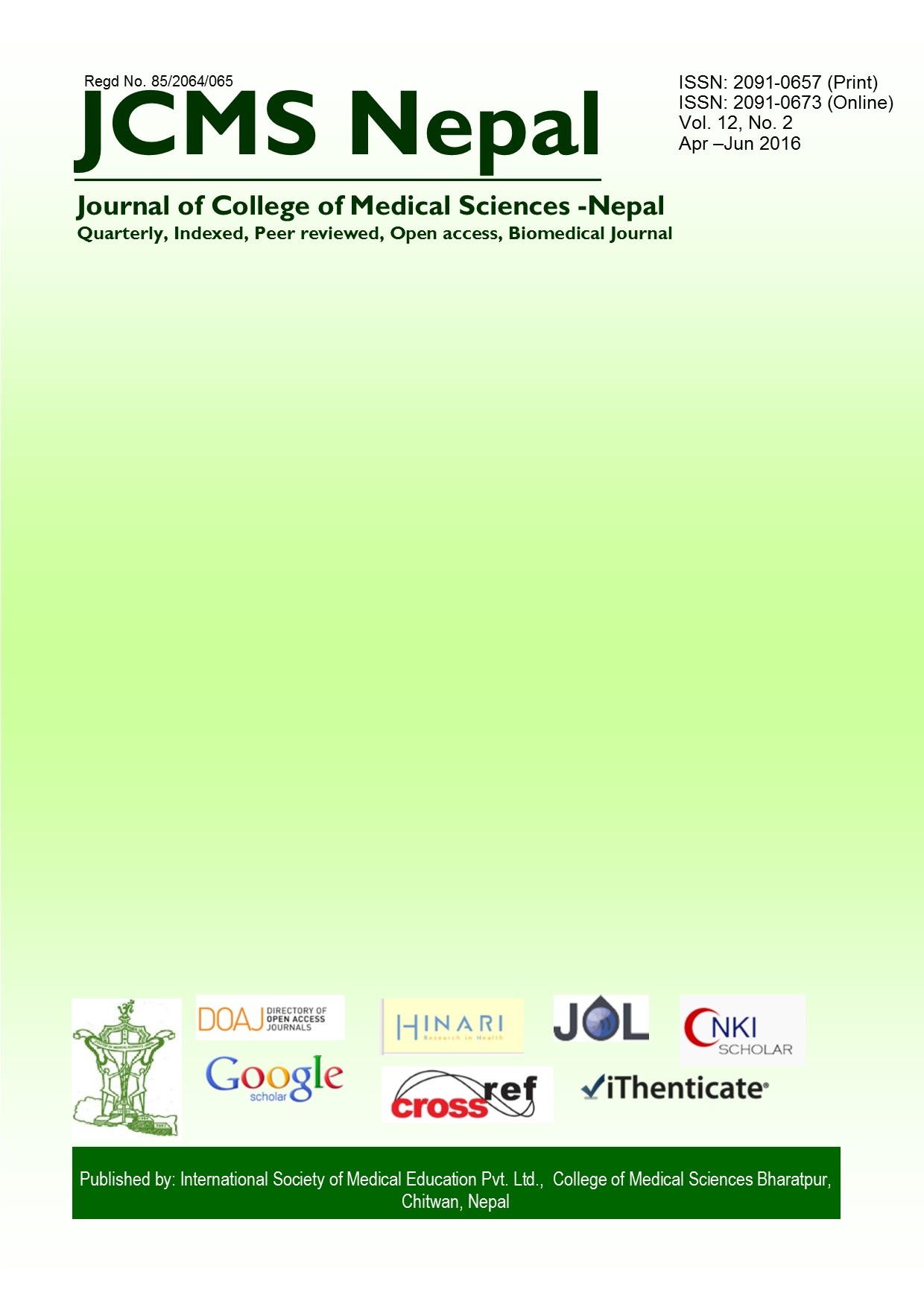A comparative study of fracture shaft of femur in adults treated with broad dynamic compression plate versus intramedullary interlocking nail
DOI:
https://doi.org/10.3126/jcmsn.v12i2.15453Keywords:
Femoral shaft fracture, femoral plating, intramedullary interlocking nail, Thorensen criteriaAbstract
Background and Objectives: Diaphyseal femur fracture is one of the commonest fractures to present in an emergency room. The objective of the study was to compare femoral shaft fractures treated using nail with those using plate and screws.
Patients and Methods: We studied a total of 62 patients of fracture shaft of femur admitted in the Bharatpur Hospital, Bharatpur, Chitwan and National Academy of Medical Sciences, BirHospital,Kathmandu. Two cases were lost to follow up. Thirty cases were treated with plating and 30 cases with nailing. The age group was from 16-30 years. Fifty-three were male and seven were females. Fifty-eight patients had closed fracture and two had Gustillo Anderson grade I openfracture.
Result: Time from injury to surgery was 19 days on an average. Mean time for union was more in patients treated by plating, 19.46 weeks as compared to nailing 14.78 weeks. We found one case of infection with plating and breakage of plate in four patients. One patient with nailing did not show any signs of healing and two had failure in case of nailing. Our series revealed 23(38.3%) excellent, five (8.3%) good and two (3.3%) poor results in patients who had nailing while 15 (25.5%) excellent, nine (15%) good, one (1.7%) fair and five (8.3%) poor in patients who had plating out of 30 patients in each group.
Conclusion:In our study we found that there was no significant difference in outcomes between plating and intramedullary nailing of femoral diaphysis fracture in terms of union, infection and implant failure.
JCMS Nepal. 2016;12(2):66-9.
Downloads
Downloads
Published
How to Cite
Issue
Section
License
This license enables reusers to copy and distribute the material in any medium or format in unadapted form only, for noncommercial purposes only, and only so long as attribution is given to the creator.




